Motivation is a key factor in the making of a musician. Motivation is paramount in every aspect of our lives, but how we are motivated - or more important - how we choose to motivate ourselves or be motivated by others, is very different.
The two main types of motivation are extrinsic and intrinsic motivation.
Extrinsic motivation is external. It has been referred to as "dangling the carrot" in front of someone to motivate him into action. This is motivation through incentives, rewards, gifts, inheritances, allowances, and anything that has been promised, guaranteed, offered, bribed, expected, or inferred. People do something in exchange for what they have been told or led to believe they will receive after its completion. This is an important step in motivating people, but it is a form of momentary motivation because it will not and cannot last. It ends when the reward has been received. It is not continuous because it is contingent upon external expectations and if not fulfilled it fails because the people being motivated rely on everyone and everything else - other than themselves.
Intrinsic motivation is internal. It comes from within. It does not rely on external factors or influences because it is self-sustaining. This means intrinsic motivation is eternal rather than momentary because it never ends. There is a beginning, but there is not an ending because internal motivation does not need incentives. It is satisfied with having fulfilled the goal, or accomplished the task at hand. It does not comprehend rewards, guarantees, bribes, expectations, or promises. It has no use for them because intrinsic motivation is influenced by itself. It is the self-propelled motor within us that wants to accomplish and progress because we want to. We enjoy the gratification for doing something because we want to and not for the anticipation of what we will receive or get back in return. Extrinsic motivation is solely about what we will receive when everything is said and done. Intrinsic motivation, on the other hand, is about what we experience during the process and how we feel about ourselves before, during, and after we have completed the task. The prize is the change that comes over us as we succeed in doing what we have said we would do - because it is what we want.
Here are a few ideas to motivate students to want to play the piano - because they want to.
1. Compliment and Praise your music students on every exercise, practice and performance piece they play. It may be a simple scale to a teacher or parent, but to the music student it is a triumph. It is as though they have scaled the first mountain top of the their long journey toward musicianship.
2. Reward your students when they complete an exercise, practice, or performance piece. In the beginning extrinsic motivation may be needed to teach them how to motivate themselves. Incentives, rewards, and gifts my be suitable to help maintain their enthusiasm. But, it must not become an expectation because then they will continue as long as the promised reward gets better and better (and students will only continue if the rewards continue to get better) and when that fails to happen their motivation to continue playing their instrument will end. Make the transition from extrinsic motivation to intrinsic motivation.
3. Ask your students what they want to learn and teach them what they want to learn. It may sound simple, but students, whether young or old, know what they want to play. Ask your students to choose the songs they will play. When students are given the opportunity to select the songs they want to play they feel more motivated to learn the pieces. When people don't feel well, they go to the doctor and the doctor asks them where it hurts. If music students want to learn a certain style of music, they should be able to. Music teachers should follow the doctors' example and ask students what they want to do. It will motivate them because they'll feel good about what they're playing. If they've selected the songs they must like them which helps them want to play them (they will practice because they have chosen the songs themselves).
4. Help your students know what they are doing (the technical side) and why they are doing it (the emotional side) in everything they do. If students don't comprehend what they are doing (the technical side of it) and don't understand why they are doing it (the emotional side of it) they won't play and won't progress. It won't be enjoyable to them, the parents, or the teacher. Always explain the reason(s) for playing an exercise, drills, scales, chords, particular songs, etc.
5. Once a student can play a song as it is written, teach them to change the style of the music. They can change the rhythm, harmony, and overall feel of the piece. If the song is happy (in a major key) help them play it in a sad style (in a minor key). Try the piece as a jazz piece, blues, rock, classical, etc.
6. Challenge the student to compose one new song per month. Creating or writing music gives the composer (in this case the student) ownership. Instantly they are excited about music because it becomes their music.
7. Hold a concert and have the students play two songs (one they've been working on and one they've written). Having a concert where students can perform in front of an audience is essential. Playing in front of others is a wonderful way to build confidence, improve self esteem, and have fun. When students play one of the pieces they have personally written, they feel a greater connection to music, to their instrument, and to the audience because they are sharing their ideas. They are sharing themselves.
8. Have the parents take lessons and learn with the student (this becomes a challenge for the student and parent to be better than the other). When parents are involved in what their children learn they connect with their children in a unique way. They are actively involved instead of being passively preoccupied with what their children are doing. When parents partner with the music teacher and learn what their children learn they also become a teacher to their child and an amazing example. When children see their parents doing the same activities with them, they are more determined to progress and improve.
9. Have fun music camps such as jazz, compositional, etc. Bring in a presenter who can excite and entertain the students. This will encourage the students to want to be like the professional they have met. Professional musicians can be wonderful role models for younger musicians. The students will look up to these professionals and want to play their music, imitate their style, and do what they have seen them do. When they meet a composer or professional entertainer they connect with the music on a personal level because they know the artist and feel special because they do.
10. Ask students to learn the piano music from their favorite video game. Believe it or not, but video games are starting to produce beautiful scores to accompany their animation. Students are excited because their friends will more readily recognize the soundtrack to a video game as opposed to a major symphony or classical work. Please still teach the masterpieces from the masters. This is not meant to replace anything the student is currently learning or the teaching style of the teacher. This is merely to augment what the teacher is already doing to help motivate the student.
11. If they're bored playing their music as it is written, have students turn their music upside down on the piano and play it that way. Students can play their music "upside down and backwards". It is often very entertaining, unique, and may give students compositional ideas.
12. Have the students learn about the great composers' lives from Bach to Bon Jovi.
When students find out interesting facts and trivia about the great composers the music comes to life. It no longer remains a symphony from the past, but it becomes something familiar to them because they learn stories about why it was written, for whom it was written, stories about performances, etc.
13. Encourage the students to listen to their favorite music on the radio, CD player, internet, ipod, itunes, etc. and try to play it by ear. Not every student learns the same way. Many students are visual, but many are audio. These students can hear something and play it. They must be encouraged to excel in this area. Many teachers want the students to read notes, which is a necessity. But, if they do not learn how to play by ear as well they will be able to read sheet music and if the sheet music is not present they cannot play anything.
14. Teach students, jazz, blues, ragtime, new age, show tunes, popular, etc. Not everyone is a classical musician. Some prefer jazz, blues, ragtime, new age, show tunes, popular, or any other type of music. If that is their preference they must be encouraged to primarily focus on the style of music they enjoy. They should be taught how to play all types of music, but if they are interested in one type more than the others they should pursue that interest (it will help them want to continue practicing because it is what they want).
15. Teach with technology (use digital recorders, computers, camcorders, the internet, etc.). Record every lesson with a digital recorder and have the students review their lessons. Film one lesson a month with a camcorder so students can visually see how they look when they play the music.
16. Create a blog where students can ask questions, see lessons, assignments, teaching tips, advice or anything you want to share with students. This is the information age and the majority of students (especially younger ones) are more technologically minded. It is an effective way to connect with students.
17. Create a YouTube account and post videos of your students playing on it. Record your students playing and post it on your YouTube account. Students can tell their friends to visit your YouTube site to see their recital, concert, master-class, etc. Nothing is more motivational than seeing a student perform a well practiced piece in front of an audience. Why not capture that moment and showcase it to the world. With the internet, that is possible.
Written by Jerald M. Simon
Copyright © 2008 Music Motivation®
All Rights Reserved
Wednesday, September 24, 2008
Subscribe to:
Post Comments (Atom)






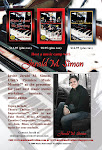.jpg)




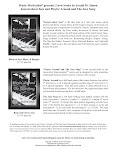
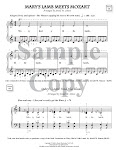
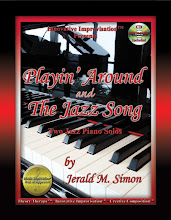
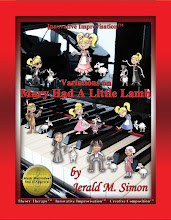+latest+and+greatest+flattened+(smaller+size)+rgb+mode.jpg)
.jpg)
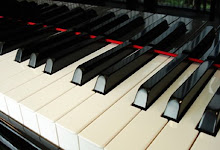

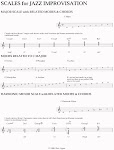
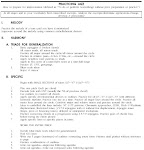


































.jpg)
No comments:
Post a Comment